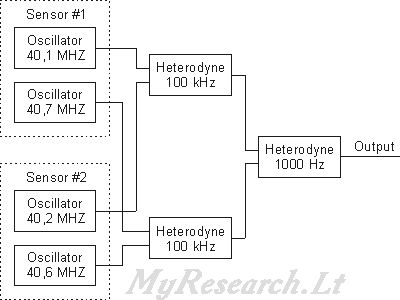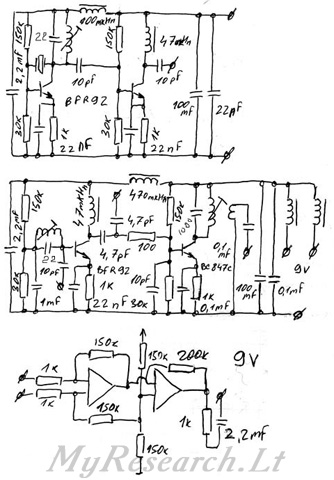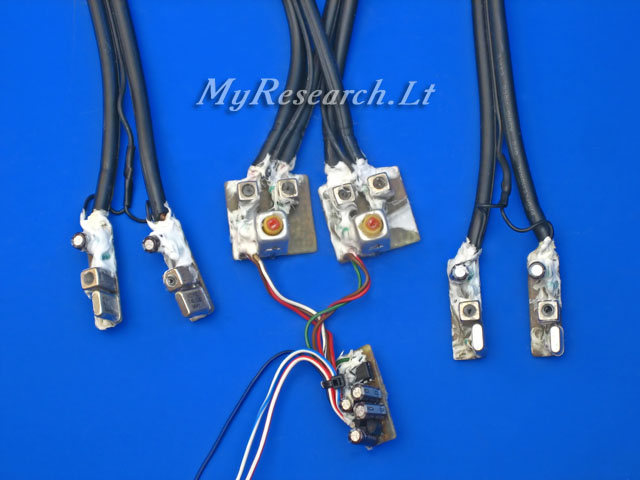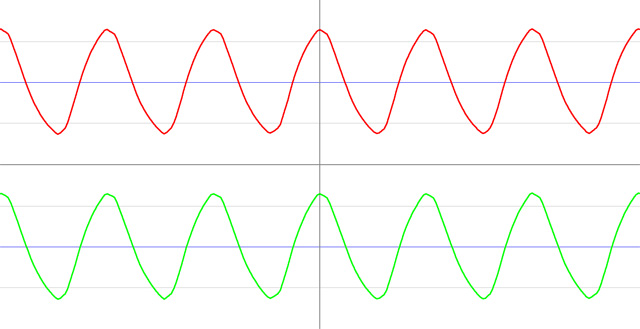The experimental work was bound with the research carried out by Kozyrev N.A. The work was based on the materials described in the paper “On the possibility of experimental investigation of the properties of time” // Time in Science and Philosophy. Prague, 1971. P.111-132.
The principal idea is alteration of the density of the time space close to the object under research while carrying out any work. A gyroscope, vibrating objects and volatilized liquids were used as objects under research. For measuring the changes, a mechanical weighing-machine and a pendulum were used. The value of a change is fixed in the sixth decimal place and sometimes even in the fourth decimal place. In later experiments, a possibility of screening and reflection of the field under research was demonstrated; for registering, thermal resistors were used in them. A more detailed description of the procedure is provided in paper “A new method of the determination of trigonometric parallaxes based on the measurement of a difference between the true and apparent star positions”, 1978.
Some phenomena examined in the framework of the said works:
a falling body deflects southwards, not only eastwards;
a gyroscope moves to the side where its clockwise rotation starts from;
the weight of a vibrating object falls;
the weight of a non-vibrating object on a vibrating support increases;
close to an engine, time density decreases, and close to a shock-absorber, time density increases.
The measurements were made using mechanical methods; the fixed deflections were explained as a result of changes of time density. The author himself mentioned an irregularity of the fixed effects.
For examining the said theory, I made an electronic device with two sensors. The sensors are high frequency generators. A change of frequency may attest a difference between the values of time density in two points of the space. The block scheme of the device is presented below.

The change of frequency in the 0.818 Hz output conforms to the supposed change of time density on 1х10[-8]. The electronic schemes of blocks of the device and its photos are provided below.



On registering frequency changes, a possible side effect of extraneous objects on the sensors via capacitive, inductive or thermal links should be taken into account. In other words, frequency changes may appear for causes other than changes of time density.
In the first experiment, a vibrator fixed to the end of 2 m long wooden rod was used. The rod with the vibrator was hung on a rubber shock-absorber. One sensor was fixed close to the vibrator and the second sensor was fixed close to the shock-absorber.


The measurement 1. The vibrator is not activated. Frequency 1078 Hz
The measurement 2. The vibrator is activated. Frequency 1082 Hz
After the measurement 2, the locations of the sensors were exchanged.
The measurement 3. The vibrator is not activated. Frequency 1087 Hz
The measurement 4. The vibrator is activated Frequency 1089 Hz
In the second experiment, the sensor was fixed above the disc of the gyroscope. The mass of the disc is 500 g and its rotational velocity is 10’000 RPM. The second sensor is fixed in the distance of 10 m from the gyroscope.

The measurement 5. The gyroscope is not activated. Frequency 1095 Hz
The measurement 6. The gyroscope is rotating clockwise. Frequency 1095 Hz
The measurement 7. The gyroscope is rotating counterclockwise. Frequency 1096 Hz
After the measurement 7, the locations of the sensors were exchanged.
The measurement 8. The gyroscope is not activated. Frequency 1101 Hz
The measurement 9. The gyroscope is rotating clockwise. Frequency 1101 Hz
The measurement 10. The gyroscope is rotating counterclockwise. Frequency 1101 Hz
The results of two first experiments had not revealed any local change of time density. The gradual change of frequency can be caused by the change of the temperature of the sensor. According to the description by Kozyrev N.A., the changes should be fixed in the sixth decimal place and sometimes even in the fourth decimal place; in my experiment, they conform to a frequency change of 81.8 – 8180 Hz.
In the third experiment, the changes having place on a short high-intensity power pulse close to one of the sensors were registered. The power pulse was formed by petards with gunpowder charge. The sensor was protected with a ceramic tile and soft gasket. The second sensor was fixed in the distance of 10 m from the point of explosion. The experiment was carried out twice; after the first test, the locations of the sensors were exchanged.

Because the moment of the explosion was very short, measurements of frequency were not carried out. For assessing the impact, the signal of the device was recorded in parallel with the video signal in the input of video camera. A change of time density could be fixed as a phase shift in the recorded signal. For identification of a phase shift, the signal recorded on the moment of the explosion was superposed on the signal recorded before the explosion. The superposition of the oscillograms had not revealed any phase shift.

According to the results of the experiments, it can be concluded that the effects described by Kozyrev N.A. are not bound with changes of time density.

